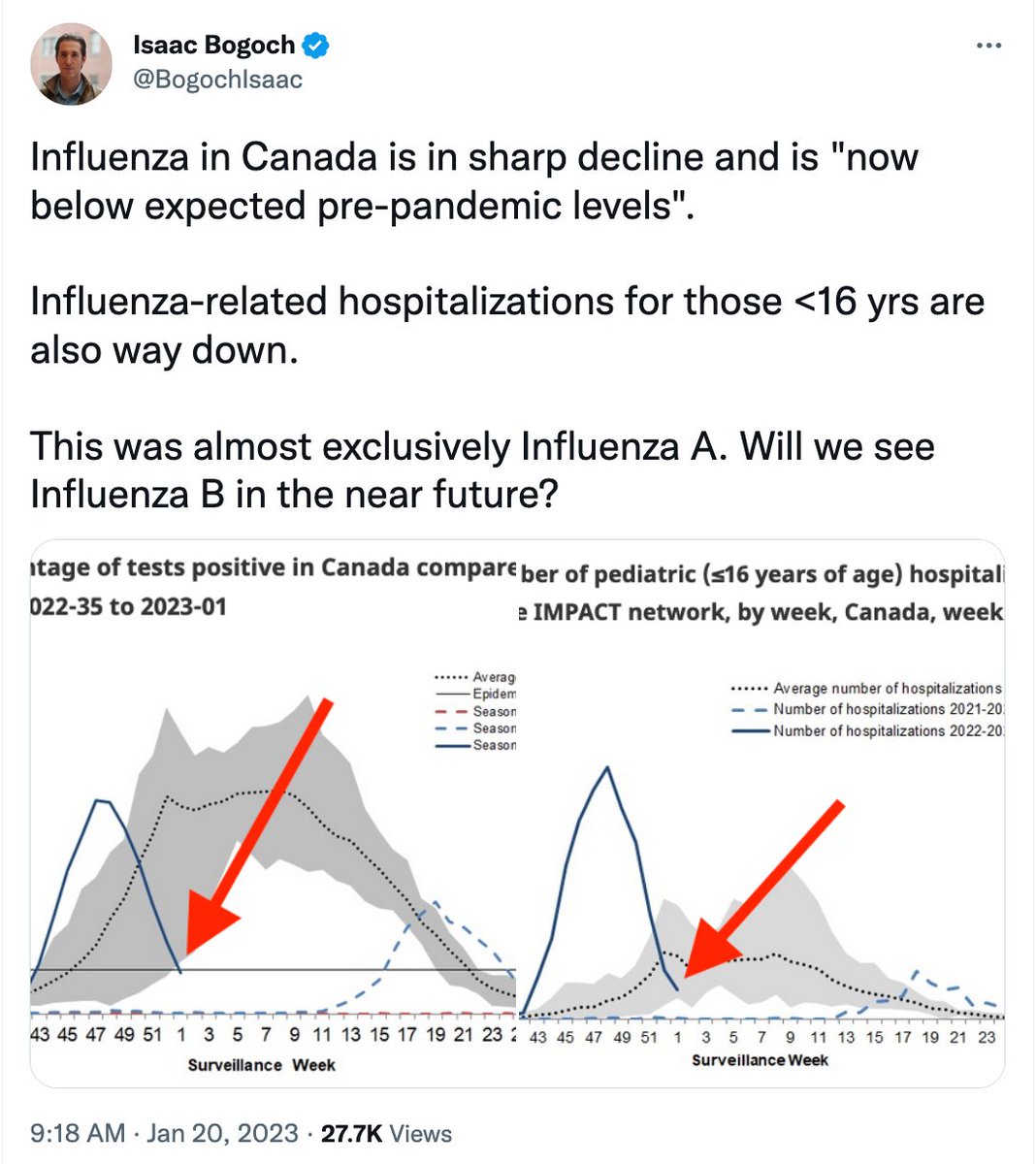
1. #Flu activity in most parts of the country is now low, @CDCgov reports in its latest FluView update, for the week ending Feb. 4. For the 3rd week in a row the rate of outpatient visits that are for flu-like illnesses has hovered just above the epidemic threshold. 

2. That said, most of the country is reporting minimal or low activity. NYC, NM and Puerto Rico are outliers on that. You can find the FluView report here: cdc.gov/flu/weekly/ind… 

3. Another 9 pediatric #flu deaths have been reported to @CDCgov, bringing the season's total to 106 so far. The days of low pediatric flu deaths are clearly over. This total is in the low end of the range of what was seen in flu seasons before Covid.
graph = mine, data ex CDC.
graph = mine, data ex CDC.

4. Interesting thing to see: As the #flu season subsides, the percentage of cases caused by H3N2 viruses is declining faster than that of H1N1 viruses. All season so far it's been an 80:20 or 75:25 split. Last week it was 54:46.
Still very little flu B & no B/Yamagata.
Still very little flu B & no B/Yamagata.

• • •
Missing some Tweet in this thread? You can try to
force a refresh























